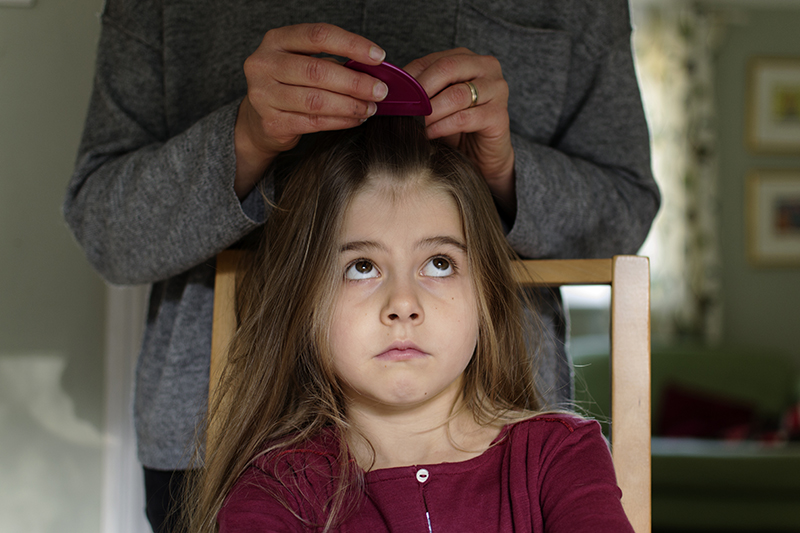
The start of school brings new friendships, sports helmets, classrooms and unfortunately, sometimes lice! Lice cause a lot of stress for both parents and schools. Not sure how to tackle the bugs or how to prevent the invasion? We can help!
Head lice are small (2-3 millimeters in size, like a seed) and gray-white in color. They live on humans and if your child is affected, you may see actual bugs or empty eggs (“nits”) tightly attached to strands of hair close to the scalp. Lice prefer the area behind the ear or nape of the neck and can cause severe itching. When they are detected, usually they’ve been present for a month or longer.

Anyone can be affected by lice – they are equal opportunity creatures! Rest assured, their presence has nothing to do with personal hygiene or cleanliness. The good news (if there is some) is that lice do not spread disease themselves the way that mosquitoes or ticks do. Lice also cannot jump or hop – they move by crawling! This means that they are typically spread by direct contact with another person. More rarely, lice can spread by use of another person’s personal items (such as a hat or comb).
“Regularly check your child’s hair for lice to aid in early identification and treatment, and to lessen the chance that others will be affected.”
School policies
The American Academy of Pediatrics recommends that healthy kids not be restricted from attending school because of head lice or nits, but some schools have a no-nit policy. Missing school days is a concern and if your child’s school has a no-nit policy, we recommend contacting your health care provider for help with returning your child to school quickly.
Treatment tips
If your child has head lice, first try over-the-counter treatments for removal and wash bedding and clothing in hot water. Repeat treatment seven to 10 days later to kill any surviving, newly hatched lice. Ask your pediatrician or family doctor if you have questions about treatment and which product to select. Natural remedies and essential oils are variably effective and not what we typically recommend as the best treatment to get rid of an infestation quickly.
Extensive home cleaning is not needed because lice cannot live for longer than a day away from the scalp and their eggs cannot hatch at temperatures lower than the scalp. Be sure to comb out any nits in your child’s hair and check other family members as well. If this initial treatment is not successful, contact your health care provider for additional recommendations as there are resistant strains of lice.
Prevention tips
Prevention is tough because kids come in contact with one another frequently. Teach your kids not to share combs, brushes or hats with one another. If your child is on a sports team, they should still use protective headgear to prevent injury. Regularly check your child’s hair for lice to aid in early identification and treatment, and to lessen the chance that others will be affected. You can check for lice by carefully combing through your child’s hair, paying special attention to the area behind the ears and at the nape of the neck. Lice can be difficult to see because they crawl quickly, whereas nits are easier to spot. Dandruff will flake easily away but a nit will be firmly attached to the hair.
When in doubt, call your child’s pediatrician or family physician for more information and with any questions.
